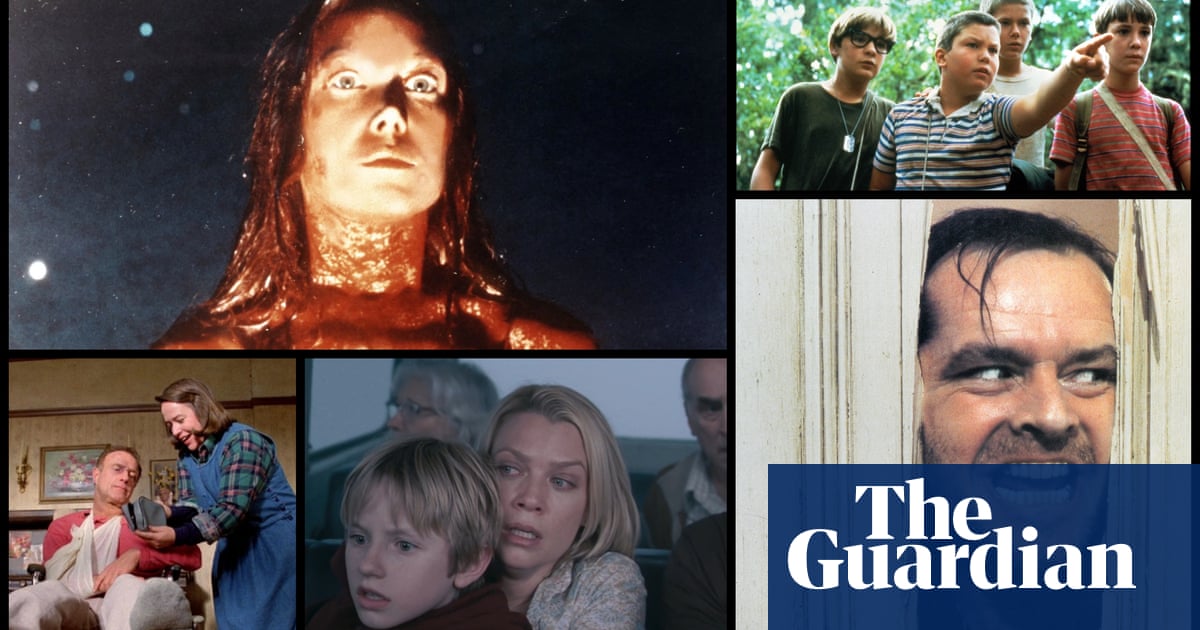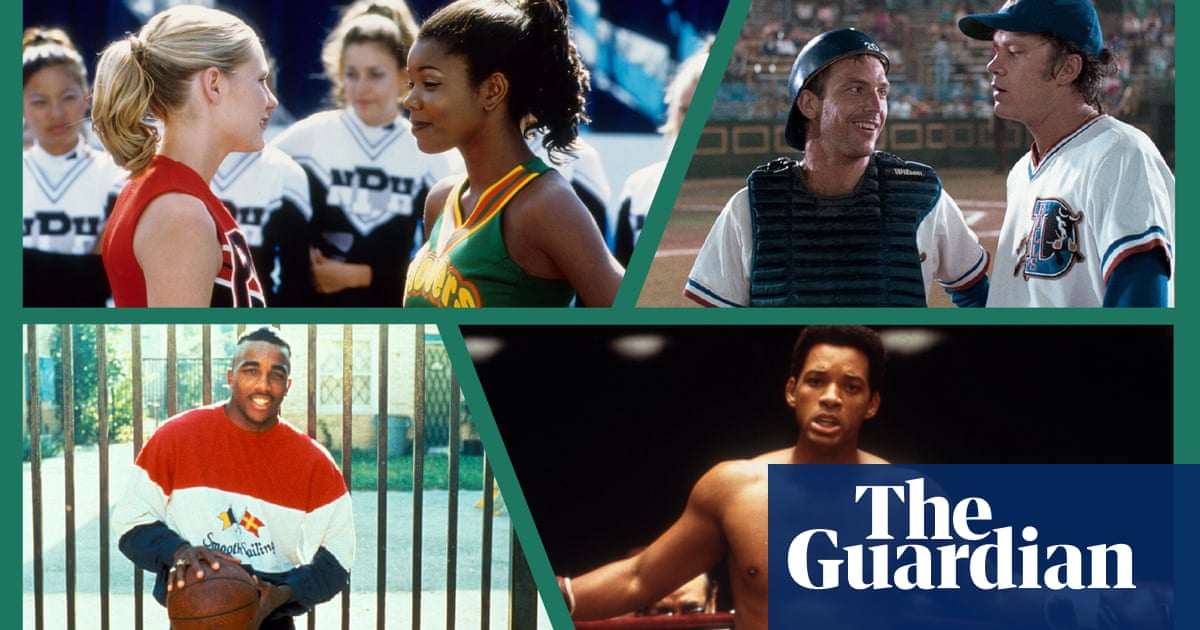
Based on King’s own wrestle with outraged fans struggling to accept his swerve away from books solely within the horror genre, Misery is another story that also exists outside of what we might typically expect from him. It’s a darkly comic thriller devoid of nefarious supernatural elements that instead weaponises a woman’s extreme loneliness and even more extreme entitlement to tell one of cinema’s most effective, and evergreen, stories of unhinged fandom. A perfectly calibrated Kathy Bates, who remains the only Oscar winner for a King movie to date, alternates her romance novel-fixated antagonist Annie between sweet and sour from scene to scene, William Goldman’s canny script adding more complicated emotional texture to what could have descended into cheap hagsploitation. Her seat-edge interplay with a never-better James Caan is a truly terrifying battle of wits, crescendoing in a scene of unforgettably well-orchestrated violence, a “hobbling” made even more horrifying by her profession of love directly after. Pop culture might have shifted since Annie’s paperback obsession but the intensity of fan culture remains just as scary. Benjamin Lee
The Shining
King famously detested Stanley Kubrick’s adaptation of his novel about Jack Torrance, an aspiring writer and alcoholic who accepts a job as winter caretaker at the Overlook hotel in the Rocky Mountains, moves his wife and son into his immense, isolated, haunted locale, and proceeds to go homicidally mad. King even tried to counter the film with a tacky three-night TV miniseries with Wings star Steven Weber in the role immortalized by Jack Nicholson. But The Shining is mostly the case of the rare artist with a vision as imposing as King’s, extracting only what he needs from the novel to create a singular, endlessly mysterious, thrillingly stylized horror film that teases out multiple interpretations while still delivering pants-wetting terror. Kubrick accomplished nothing short of reinventing the visual language of the entire genre, constantly disorienting the audience through a labyrinth of camera effects and tricks of design while jabbing them with shocks. (He may also be apologizing for his role in faking the moon landing.) Scott Tobias
Dolores Claiborne
Misery tends to grab the lion’s share of attention among Kathy Bates-Stephen King collaborations, but many (including Bates herself) view Dolores Claiborne as the finer performance and better movie. Veteran director Taylor Hackford throws us right into things as elderly Vera Donovan falls down a flight of stairs to her death – did Claiborne, her maid, kill her, or was it an accident? Over two taut hours that combine notes of noir, horror and thriller, the film unwinds the many threads of abuse, molestation and family dysfunction that have enmeshed the titular mother and her daughter. Often read as a feminist film, Claiborne chronicles three very different views of womanhood, seen via Donovan, Claiborne and her daughter, all linked by the scars inflicted by men. Atmospheric in its rural Maine island setting, featuring a show-stopping courtroom scene and an unforgettable eclipse sequence, the movie is transporting, highly readable and very, very entertaining. Veronica Esposito
Christine
No two figures could have been better suited for each other. By the time John Carpenter directed Christine, based on Stephen King’s novel of the same name, the director had already secured his indomitable legacy with Halloween and King was so prolific that 1983 (the very same year he published Christine) saw the screen adaptations of two of his other novels: Lewis Teague’s Cujo and David Cronenberg’s The Dead Zone. And perhaps no other partnership – the two foremost pillars of horror cinema at the time – could transform a 1958 Plymouth Fury into the stuff of wildly chilling, cinematic nightmares. When nerdy high schooler Arnie (Keith Gordon) buys and restores a banged-up old car, which he christens Christine, it becomes increasingly clear that not only is the vehicle sentient, but murderously jealous of anyone who threatens to come between her and her new owner. Featuring a slick, memorable score from Carpenter himself, Christine looms among the most memorable King film adaptations and has endured as a precious cult classic for horror fans. Kelli Weston
The Running Man
However much King appears to be a decent customer on social media, as a longtime non-liker of horror, I can’t say my heart fills with joy whenever there’s a new film out with his name on it. (I can get through The Shining fine, but that’s to admire rather than enjoy.) No, it’s the non-horror ones I don’t mind (though that doesn’t include The Shawshank Redemption) and I always enjoyed The Running Man, from one of King’s Richard Bachmann novels. It’s pretty silly, and in some ways looks like a rehearsal for Arnold Schwarzenegger’s better films – Total Recall, T2 – but with Starsky himself in the director’s chair, who can resist its Spandex glory? Plus – of all people – Mick Fleetwood has a cameo as the rebel leader. What’s not to like? Andrew Pulver
The Mist
Frank Darabont wrote and directed two of the most uncommonly warm-hearted Stephen King adaptations, the twin jailhouse Oscar dramas The Shawshank Redemption and The Green Mile. Improbably, he then turned around and made maybe the harshest, bleakest movie based on a King story, The Mist – a truly unsparing thriller about a group of desperate townsfolk holed up inside a grocery store after a mysterious fog rolls over their sleepy Maine burg, bringing with it a horde of deadly nightmare beasties. Darabont leans into the 50s sci-fi trappings of King’s novella, as well as the potential to riff on the squabbling, claustrophobic, single-location paranoia of Night of the Living Dead. The Mist is a splendid monster movie, with creature effects that have held up surprisingly well over the years, but it’s also a rather withering meditation on humanity’s tendency to slide into tribalism and hysteria during times of crisis; in that respect and others (including the cast list), you could call the film a dry run to Darabont’s televised take on The Walking Dead. The ending, incidentally, is darker than even King was willing to go – a frankly astonishing expression of the author’s greatest fear, an inability to protect his family from the evils of the world. Andrew Dowd
Salem’s Lot
Stephen King’s loose reimagining of the Dracula mythos filters Bram Stoker’s narrative blueprint through his own pet themes, grafting the tale of carnivorous real estate dealings on to one of the idyllic New England suburbs where placid Rockwellian exteriors conceal dark psychological thickets. King’s prose cannily fused the fantastic terror of vampires with the chillingly plausible fears of vulnerable children in a hostile, adult world, but the 1979 miniseries directed by Tobe Hooper captured the vantage of a kid’s-eye nightmare even more vividly. The sumptuous CBS-broadcast cheapness burnished by Hooper’s tactful blocking and composition, the accented performance from James Mason perfectly befitting a tone one or two notches off of the real, the feral creature design that drags Count Orlok by the pointed ear into the pop era – it’s three square meals of classical scary movie generously dished out over three hours, vicious and fun in ideally balanced proportions. If only it were three hours longer. Charles Bramesco
Carrie
King was working as a high school English teacher not even a decade removed from his own time as a student when Carrie was published. That’s perhaps why his career-making debut novel felt like such a fresh nightmare vision, capturing the terror and trauma of being a teenager. Carrie has so many hallmarks the author would become known for – macabre takes on puberty and domestic life – which are all distilled into Brian DePalma’s elegantly unholy movie, where gallows humor is elevated by Hitchcock and giallo style. Sissy Spacek, with her sharp and angular features and banshee screeches, is iconic as Carrie, the awkward and bullied teenager raised by an abusive religious fanatic. She struggles to control her hormones and telekinetic powers until her Cinderella prom night is twisted and contorted by that sinister plot to drench her in pig’s blood. That sequence is monumental, with DePalma unloading all the visual grammar at his disposal – thrilling and graceful long takes, antagonistic slow motion and chaotic split screens – with the same controlled fury as Carrie unleashing hellfire. Radheyan Simonpillai
Stand by Me
It’s often said with Stephen King stories, it’s not about the horror; it’s about the characters. Nowhere was this put to the test more than in Stand by Me, which freely adapted King’s short story The Body into a nostalgic, picaresque, almost family-friendly coming-of-ager – although mortality is very much at its core. I was only slightly older than the story’s protagonists when I first saw it in 1987, which could be why it struck such a chord: juvenile japes, retro 50s tunes, a great vomiting scene, but also the sense of adulthood awaiting just down the tracks. It looks a little sentimental today, admittedly, but how many movies of any era have examined young male friendship with such compassion and honesty? King has said the story is “autobiographical” but it also feels like the film’s central quartet are actual buddies – testament to the young actors. The eerie foreshadowing of the death of River Phoenix, six years later, makes the film even more poignant. Steve Rose












